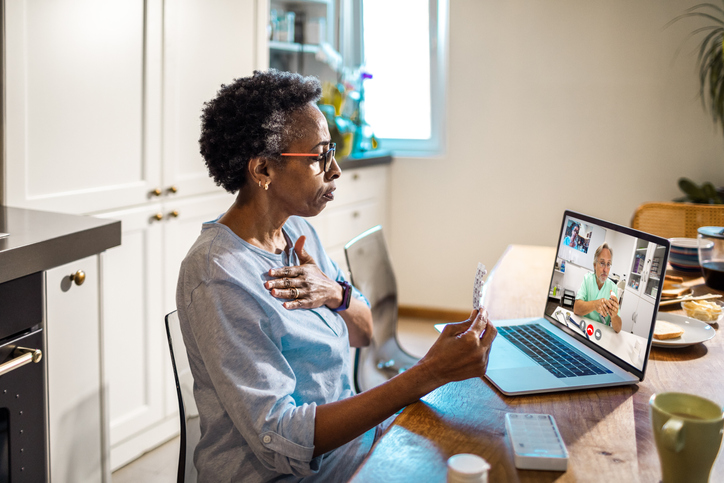 |
| Offing telemedicine consults can help your practice re-engage with patients who have neglected care of late. Photo: Getty Images. |
The prevalence of asymptomatic and mild glaucoma patients lost to follow-up (LTF) was as high as 46% before the COVID-19 pandemic began, and it only increased after stay-at-home orders were put in place.
With the hopes of reducing this rate, doctors used an electronic medical record–based reporting tool to identify patients at risk of being LTF who had not returned to their practice within six months after being seen one year prior. A recent study suggested this tool was effective at re-engaging patients.
After one month, 124 LTF patients (32%) had been re-engaged (40% through telemedicine), 238 patients (62%) had future scheduling orders in place and only 22 patients (6%) had no follow-ups scheduled. Patients were considered to be re-engaged if they completed a telemedicine or in-person appointment, or if they had a future scheduled or ordered return appointment.
“An EMR-based QI initiative successfully identified patients with glaucoma-related diagnoses who were at risk of being LTF and employed a provider-based strategy to selectively re-engage patients through a combination of telehealth and office-based recall orders,” the authors concluded. “Such efforts not only promote optimal care of patients by potentially reducing the undesirable outcome of vision loss from inadequately-managed glaucoma, but also serve to maintain clinical productivity, document treatment plans and potentially reduce medicolegal liability arising from gaps in glaucoma care.”
Age or gender did not have to do with LTF status, but the authors found that the distance from the eye clinic and the number of appointments in the prior year were important factors. They also reported a relationship between the number of cancellations and missed appointments and the risk of LTF. The team was not able to assess the specific impact of baseline IOP or family history of glaucoma because they were extracting information rather than performing a manual chart review.
“Our study also identified several readily-obtainable EMR data elements that are associated with LTF, including distance to the nearest eye clinic, ophthalmic appointment history and prior ophthalmic testing history, that may alert clinicians to patients posing a relatively greater risk of LTF,” the study authors wrote. “This allows the opportunity to develop protocols for ensuring that higher-risk patients return for care.”
Robbins CC, Anjum S, Alwreikat AM, et al. An initiative to improve follow-up of patients with glaucoma. Invest Ophthalmol Vis Sci. 2021;62(8):1617. |

